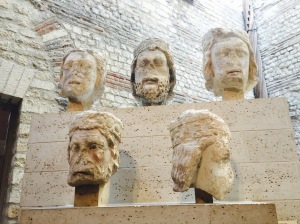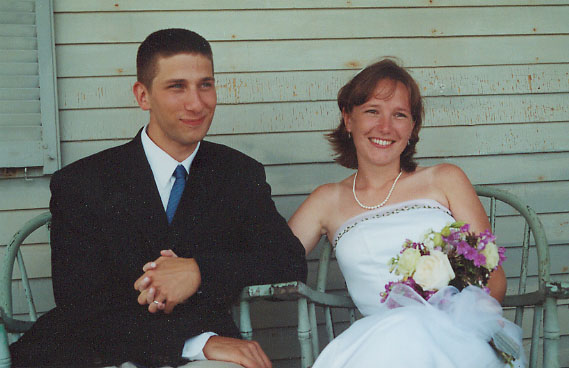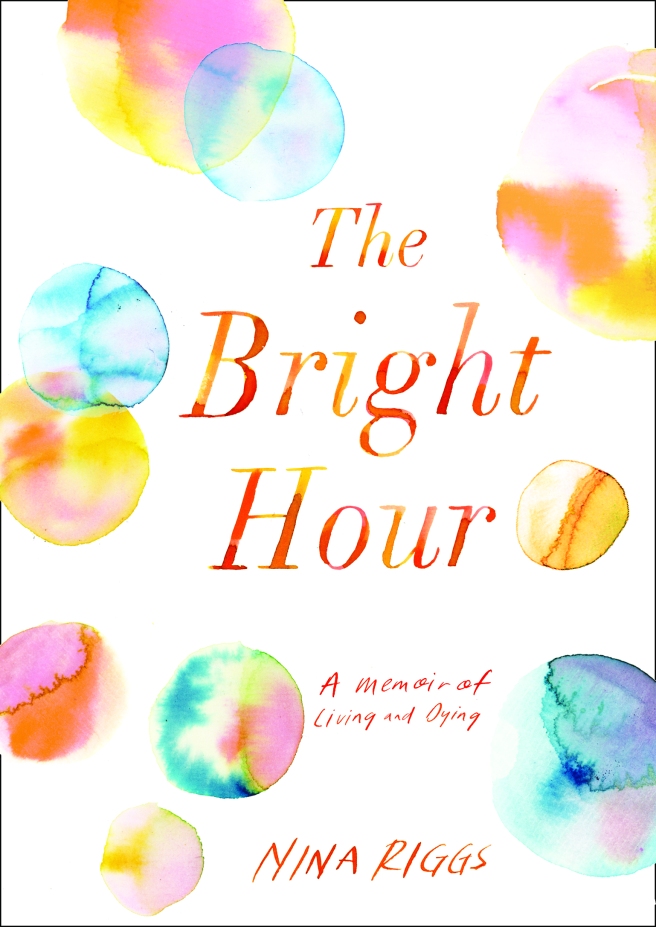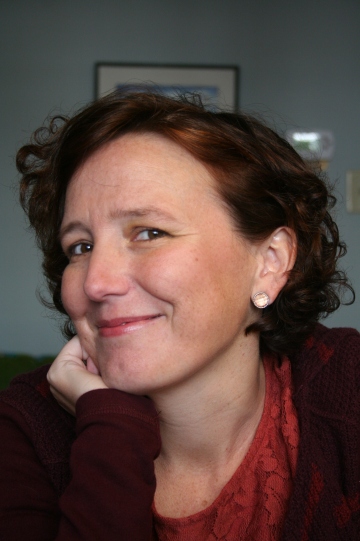When my wife was dying, the last thing I wanted to think about was my next relationship. The very idea baffled and repelled me. It wasn’t that I thought I’d live out my widowhood lonely and celibate—I could recognize even in my anxiety and grief that I would want someone to live, work, and play with for the remainder of my life. It just didn’t make sense to me to think about that phase before Nina was gone. I couldn’t even bring it into focus. I wanted all my available energy focused on the time I had left with her, which felt like it was constantly slipping away already.
In reality we had plenty of time to ruminate. Nina’s cancer became metastatic over a year before she died. With triple negative breast cancer, that’s a pretty sure terminal prognosis. So we had fourteen months to ponder both Nina’s early mortality itself and the aftermath for me and our kids. That’s way too short a time for the rest of a life, but a really long time to think about dying young.
Nina was much more proactive in thinking about what came next. I remember the first time she brought it up. “Please promise me that you’re going to be open to finding other relationships after I die,” she said through tears not long after her surgery for the broken vertebra that announced the cancer had spread for the first time, “you know you’ll do SO MUCH better in a relationship. I can’t bear the thought of you being alone. So I want you to promise me.” I protested gently that I couldn’t even imagine what I would do after she was gone, and didn’t want to focus on it. But of course I made the promise—who refuses a promise to a dying woman, let alone a dying woman who’s the emotional center of your whole world?
Nina repeated that conversation several times. She wanted reassurance my intentions were true and clear, that I had actually thought about my life after her death. She knew me—knew that if my mind wasn’t bent deliberately on something, it would wind up neglected, if not forgotten. So she made me promise and re-promise: she asked me to say that I would not only be in another relationship, but get married again. And she insisted that I not have a vasectomy when she was getting ready to do a drug trial that required either that or an IUD for her. “You never know what you might want in the future,” she insisted over my protests that I wasn’t even sure I wanted the kids we already had.
Nina was thinking actively about life for me and our boys until nearly the time she died, and not just my future intimate partnerships. In a thousand small ways, it occurred to her to recommend little things she thought might be helpful to me. She would remind me about friends, cousins, neighbors, or colleagues who would be there for all of us when she’d died, framing and reframing relationships for me in ways I’d likely have neglected, so that the channels of support were reassuringly clear. While we were in hospice she got an email from Lucy Kalanithi. I was only dimly aware of Lucy, but Nina reminded me she knew Lucy in her capacity as the widow of author and neurosurgeon Paul Kalanithi, whose book on his own death from cancer—When Breath Becomes Air—Nina read and loved when it came out the year before (she mentions it along with Atul Guwande’s Being Mortal and a few others in The Bright Hour as part of an ongoing conversation she saw her own manuscript engaging in).
Lucy had tweeted about Nina’s article in the NYT Modern Love column when it came out, had been an early reader of Nina’s manuscript, and a big supporter—ultimately agreeing to write a blurb for the book. But this email message was brief and personal. It simply read: “nina, your writing is extraordinary. (in my opinion, that means so is your soul). I’m beaming you love from my whole being. your forever fan, lucy.”
I read it aloud to Nina, who was then only 48 hours from dying. She was warmed by the words as I read, because although sent from a person she’d never met, they’d had an important connection. Lucy’s early support meant a great deal to Nina, bolstering her confidence in particular about Nina’s portrayal of doctors. “You know,” Nina told me almost offhandedly, “Lucy is a person you should really be in touch with. She’s been through the whole gauntlet you’re about to face, and she seems like a person with real insight and terrific amounts of empathy.” Then Nina dictated the gist of a reply to Lucy, and we decided I would introduce myself to ask if I might ask if I could contact Lucy for advice at some indeterminate point after Nina died when grief and loss were manifest.
I don’t remember all the details of the days following Nina’s last breath, except that I felt both completely at sea and totally possessed with the need to try to stay on top of things: the memorial service, Nina’s manuscript, the kids, my house. All. The. Things. In the small hours of a night not long after Nina died I was awake with all facets of my life gnawing at me. Not even grief or pain—it was really too soon to even gauge all that. More the practical realities of a life whose very structure had just been blown apart.
I had so many questions. So little orientation. How should I cope with the trauma of Nina’s actual death? It had undone me, but I had no idea whether it was “normal,” having witnessed a grand total of zero other people die. What would I do with all our friends, who were nearly all couples, now that I was both unwillingly single and a living reminder of early mortality and pain? How long could I or should I take leave from work to make sure I am ready when I go back? How will I have enough time to take care of my family and myself? Where will I seek or find intimacy, given that I have been married since I was in my early twenties and have never even seen an actual dating app? Do I need to buy more dogs? Cats? A tortoise (longevity was looming large as a factor at that point)? How would I keep myself upright as the successive waves of grief hit? How much help would I need making my household function, and for how long? How did I find a nanny or babysitter who would understand our situation and be able to handle it? SO MANY QUESTIONS. So little sense of normalcy or, as it turned out, propriety.
I took all these questions and I did what any normal, emotionally devastated, sleep-deprived, bereaved dude would do: I put them all (and several more) in a several-page email and sent them to Lucy Kalanithi, whom I’d never met, pleading for survival advice and social forgiveness. Nina had told me that this might be a good person to ask after she died. She didn’t say I had to wait a certain TIME after she died. She just said “good resource.” And at that point, I may have been taking things VERY literally. My email included boldfaced headings for the various sections of my concerns: “Friends,” “Nina’s Death,” “Work,” “Coping with Grief,” and perhaps most ironically given the tenor and social anormalcy of the email it was contained in “On Not Going Crazy.”
Lucy somehow read this and was foolish enough not to run screaming in the opposite direction. She not only answered my questions as best she could, she sought input from colleagues and sent me their feedback as well. She took me seriously. She validated my concerns. She was open, kind, and available.
But then we did something that seemed unexpected: We began a regular, intense, personal correspondence about the vagaries of loss, grief, and loneliness. Nina had directed me to contact Lucy. But I don’t think she foresaw me prying Lucy away from her life to carry on an epistolary relationship that quickly transformed from one sided (mine) and riven with neediness (mine) to a genuinely mutual exchange.
Lucy and I wrote—often multiple times a day—about everything: our relationships with our in-laws (both hugely important); what kinds of things we could do to preserve the memory of our dead spouses for our kids—her daughter whose brief 8 months with her dad would all be pre-memory and my kids, who would have their precious few years of memories of their mom cut drastically by their developmental ages at her death. Lucy told me to join the Hot Young Widows Club, a private Facebook group for people who have lost a partner at a younger than normal age, and the site proved to be a major source of support for me, and a wonderful joint bonding experience. We joked that the catalog of our correspondence was a whole other book: When Breath Becomes the Bright Hour, and that it could be a sequel to both our spouses’ work, if only it weren’t so unbelievably sappy and implausible, a Rom-Com.
The breathtaking thing, in retrospect, was not just the intensity or intimacy of the correspondence—though we were total strangers talking about perhaps our most private and painful emotions. It was the sheer volume. It was not until Lucy and I started writing that I realized Gmail rolls you over into a new thread when you hit 100. By the time we actually met in person (at which point we had communicated only by email) during a work trip Lucy made to North Carolina, we had lapped the century mark multiple times and begun new threads to keep from getting lost in our own back and forth.
So maybe it should have been obvious that we had good chemistry. But in our circumstances, there were many obvious reasons not think of ourselves in that light. Lucy was further along in her grieving than me—the two-year anniversary of Paul’s death fell shortly after Nina died. But we were both freshly out of the only relationships we’d had in decades—nearly thirty years of marriage collectively. From deep in the throes of grief, preoccupied with surveying the wreckage of my lost life (and also of our house, because right after Nina died I also made the decision to go forward with a renovation we had planned for our home—it worked out but I don’t recommend this timing?), it didn’t even occur to me that I might fall in love again. Until it happened.
Science, man. Apparently, chemistry don’t care about your circumstances. It’s just molecules making molecules. Ineluctable. Mysterious. Who can even explain it (other than maybe a doctor or scientist)? That’s how I feel about trying to describe meeting Lucy in person for the first time. Maybe the best I can say is that when we met in person it was clear there was no OTHER impediment to the mutual attraction than our circumstances and loss? The chemistry was pretty hard to miss, even for a humanities dude.
The ostensible reason for us getting together was that we were scheduled to do a joint book event in San Francisco for the launch of The Bright Hour in June. But we could both tell we had more to talk about than logistics. After meeting, we’d abandoned our self-imposed email-only relationship medium and begun texting (out of necessity! For planning purposes! Not because we were SUPER hot for one another. That wasn’t appropriate!). In San Francisco we did two events in one day—one out in Marin County and one in the City—and Lucy squired me around to both of them. So we got to spend the whole day together. We had lunch in Sausalito, drove into San Francisco. Not at all propitious for budding love. Ho hum.
We dispensed with any pretense that we were just two people sharing the experience of joint loss, or supporting one another through friendship. The chemistry was beyond palpable. It was intense. And it was building on what was now a fairly deep epistolary relationship in which we had already cut straight to the beating heart of both our lives. It was more than feeding a fire with gasoline. Just as intense as it was emotionally connected. The heat of the relationship from the very start matched the light we’d already managed to shine on all the tangled, troubled recesses of our grieving selves.
Ok. I’m running out of flame imagery. But how do you describe the feeling of falling in love, after centuries of poets and scores of Modern Love columns have already done it more eloquently? How do you even begin to describe that feeling at the same time as the overwhelming grief of losing the love of your life?
In Pittsburgh, where I grew up, three famous rivers come together—the meeting of the Allegheny and the Monongahela to form the Ohio. But Pittsburghers know there’s also a fourth river, an underground stream that no one sees but that actually feeds the fountain at Point Park, the triangle of land that marks the Confluence. I always liked to imagine it was a coursing channel when I was a kid. I loved mythology and it was a weird mix of magical and abysmal—like the River Styx or Lethe was not only running right through Western PA, but spraying up through the Point Park Fountain, one of our most prominent landmarks and a place I played regularly.
But I had the hardest time picturing the vector of the flow (maybe because it turned out—thanks, stupid earth sciences—that it’s not an underground river, technically, but “just” an aquifer, part of the Wisconsin Glacial Flow, and not a river at all): was it crosswise to the aboveground rivers? Diagonal? My favorite version had it running upstream and completely opposite, like a parallel universe’s version of our known rivers. The tension in my imagined watercourses resonates now. Both levels of feeling are inescapably part of me and I crave immersion in them in different, but important ways.
See? It’s hard to describe. Maybe the problem with this metaphor is that I’ve never been a strong swimmer. Nina used to say that I drink as much water as I displaced when I swam (which to be clear is happily not often). But, so far at least, Lucy and I have been able to stay abreast of each other in our collective tumult—the part due to fortune and the parts we crafted deliberately.
The kids have met and been kids together. We’re meeting one another’s families—both in-laws and blood relations. We have already begun to integrate our lives in a way that even today seems so improbable that we stop occasionally and ask one another if we can believe it’s actually happening. Before they died, both our spouses bid us in strong, unflinching terms to promise that we would have other relationships, get married again even. And they not only said this to us, they wrote it in their best-selling books, along with a thousand other things, so everyone knows!
Now we are in actual life, the real aftermath, not far removed from those conversations with our respective dying people, finding and forging the relationship they enjoined in a bizarrely best case scenario sort of way: by having a relationship with another widowed spouse of an author who wrote a book published posthumously about dying young. One of whose widows incidentally also wrote a blurb for the others’ book. And then helped promote it. Quizzical doesn’t begin to describe our looks when we ponder it, mouths agape. Lucy’s family has a catchphrase that’s come to be our only way of capturing the whole phenomenon: “weirder crap has happened.”
The other day Lucy’s daughter, who’s three but unsurprisingly precocious, was ruminating on family in the way that only startlingly intelligent three year olds can. She said, on the subject of the proto-familial structure we were inhabiting that weekend, “I make Benny and Freddy three.” From her toddler, “I am the center of the known universe” vantage, she articulated our whole project. Taking all these disparate parts and putting them together in some contiguous, cumulative whole bigger than the sum of its odd parts: partners, kids, grandparents, siblings, cousins, aunts, uncles, friends. Not just two families, but EXTENDED families, both of which already have broadly defined and inclusive definitions of “family” and strong existing family bonds.
The resulting family tree may grow somewhat gnarled and ungainly, but it feels filled with the very kind of promise our spouses hoped we might find after they died. The idea of multiplying the number of close relationships our kids have not only makes me excited for Lucy and me in the here and now, it is a no doubter that Nina would love and approve—she whose primary focus was creating and tending to close relationships. I imagine too that the blending of our worlds would be a continuing fulfillment of Paul’s wish for Lucy during his illness—that everyone else take care of her as she tended to his remaining mortal needs. Even more people to take care of her can’t hurt, right?
We are trying to allow ourselves to flow freely without too much restraint in both directions, while at the same time tending very carefully to our navigation. We are trying to honor lost love while embracing a new one. We are wary of the potential for hurt and harm, but even more overwhelmed by the opportunity for multiplying love and loving relationships. We are a little crazy, always a little at risk, and feeling very grateful and mournful for the evanescence of all of it.




